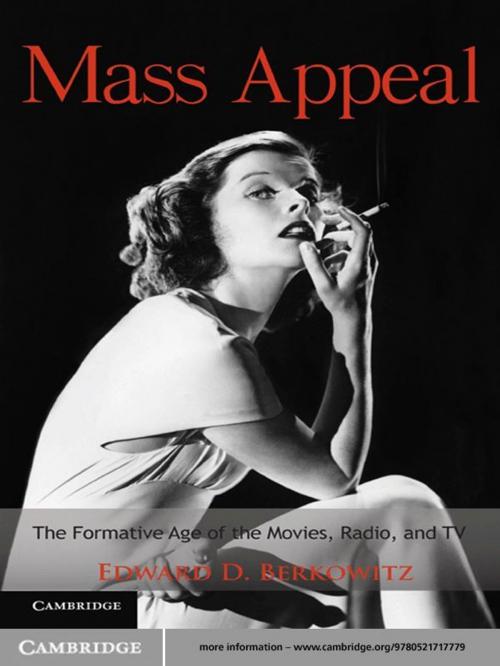Mass Appeal
The Formative Age of the Movies, Radio, and TV
Nonfiction, History, Americas, United States, 20th Century, Social & Cultural Studies, Social Science| Author: | Edward D. Berkowitz | ISBN: | 9780511852602 |
| Publisher: | Cambridge University Press | Publication: | September 27, 2010 |
| Imprint: | Cambridge University Press | Language: | English |
| Author: | Edward D. Berkowitz |
| ISBN: | 9780511852602 |
| Publisher: | Cambridge University Press |
| Publication: | September 27, 2010 |
| Imprint: | Cambridge University Press |
| Language: | English |
Mass Appeal describes the changing world of American popular culture from the first sound movies through the age of television. In short vignettes, the book reveals the career patterns of people who became big movie, TV, or radio stars. Eddie Cantor and Al Jolson symbolize the early stars of sound movies. Groucho Marx and Fred Astaire represent the movie stars of the 1930s, and Jack Benny stands in for the 1930s performers who achieved their success on radio. Katharine Hepburn, a stage and film star, illustrates the cultural trends of the late 1930s and early 1940s. Humphrey Bogart and Bob Hope serve as examples of performers who achieved great success during the Second World War. Walt Disney, Woody Allen, and Lucille Ball, among others, become the representative figures of the postwar world. Through these vignettes, the reader comes to understand the development of American mass media in the twentieth century.
Mass Appeal describes the changing world of American popular culture from the first sound movies through the age of television. In short vignettes, the book reveals the career patterns of people who became big movie, TV, or radio stars. Eddie Cantor and Al Jolson symbolize the early stars of sound movies. Groucho Marx and Fred Astaire represent the movie stars of the 1930s, and Jack Benny stands in for the 1930s performers who achieved their success on radio. Katharine Hepburn, a stage and film star, illustrates the cultural trends of the late 1930s and early 1940s. Humphrey Bogart and Bob Hope serve as examples of performers who achieved great success during the Second World War. Walt Disney, Woody Allen, and Lucille Ball, among others, become the representative figures of the postwar world. Through these vignettes, the reader comes to understand the development of American mass media in the twentieth century.















